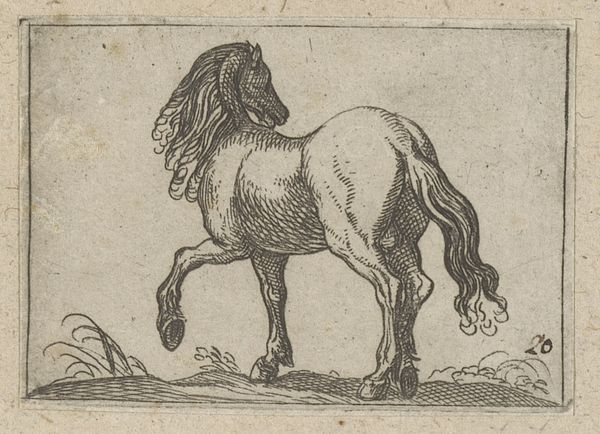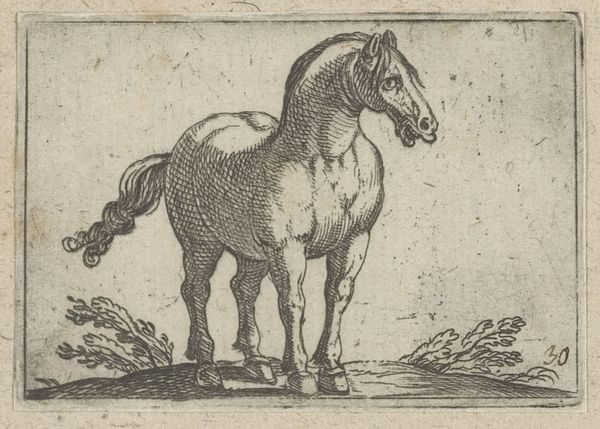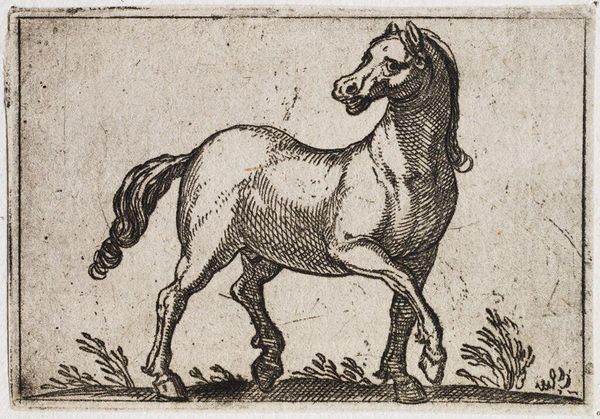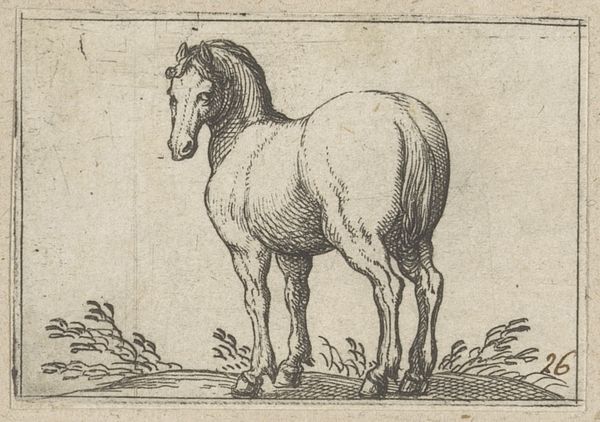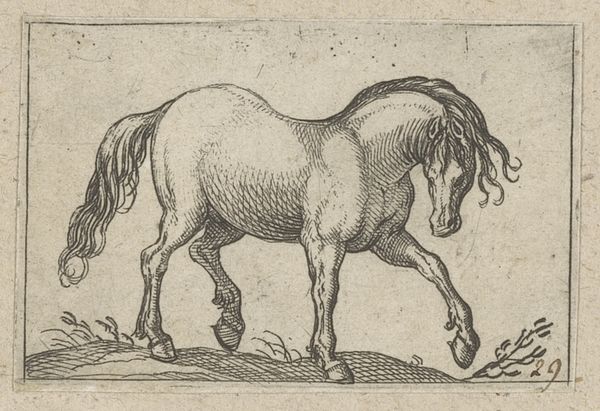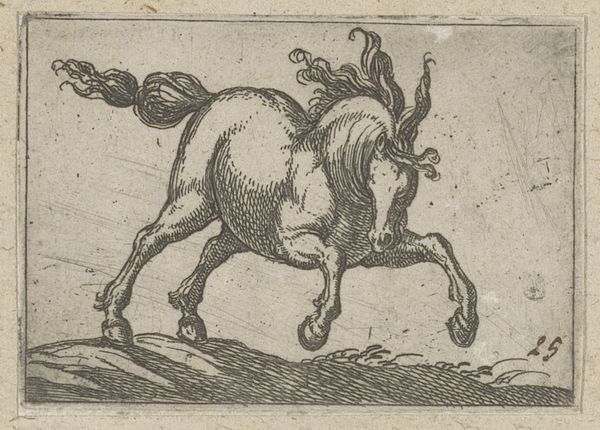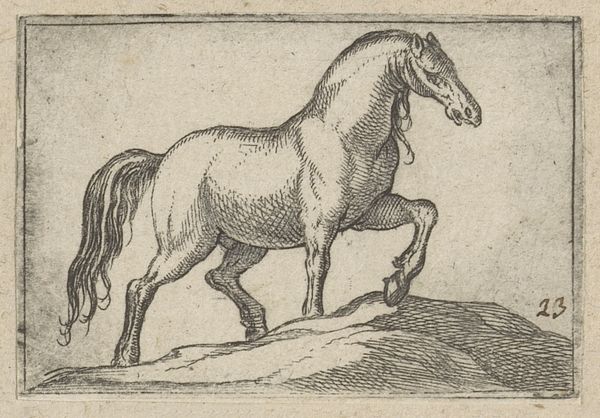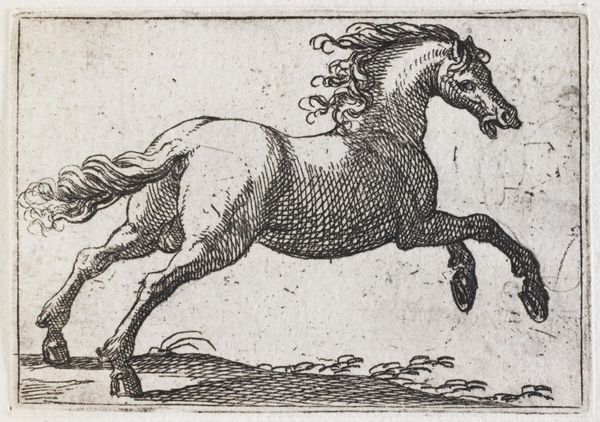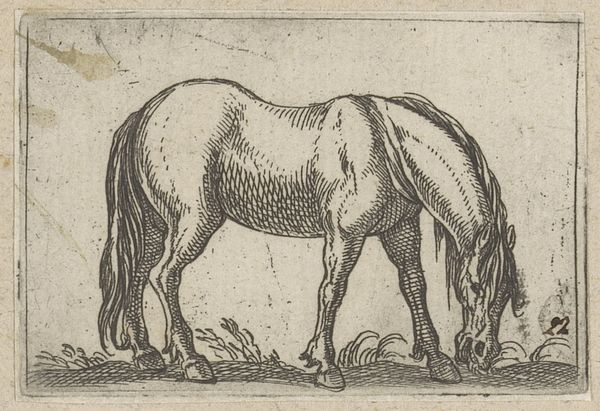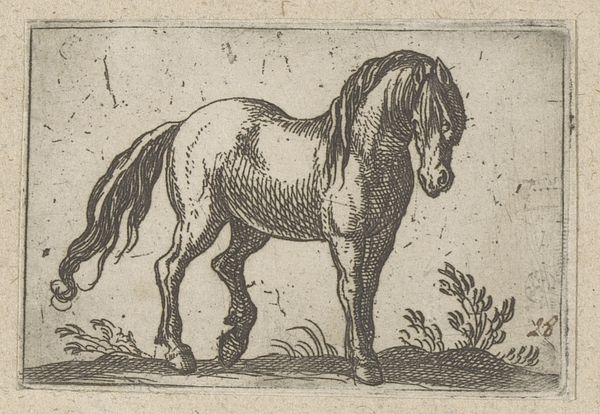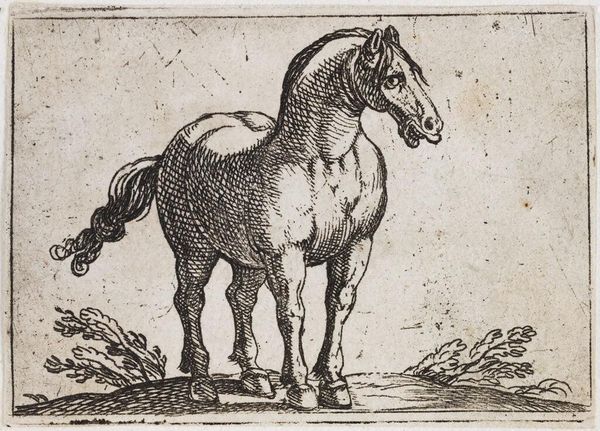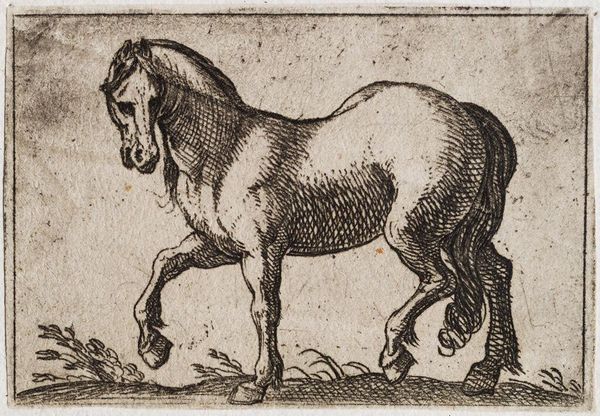
drawing, print, etching
#
drawing
#
animal
# print
#
pen sketch
#
etching
#
figuration
#
11_renaissance
#
horse
#
realism
Dimensions: height 45 mm, width 66 mm
Copyright: Rijks Museum: Open Domain
Antonio Tempesta made this print of a horse walking to the right, sometime between the late 16th and early 17th centuries. It's an etching, meaning that Tempesta would have covered a copper plate with wax, scratched his design into the wax, and then bathed the plate in acid. The acid bites into the exposed copper, creating recessed lines that hold ink. The resulting print has a distinctive character. Look closely, and you can see how Tempesta used closely-hatched lines to create the impression of shadow and volume. The horse appears muscular and full of energy, its form carefully articulated. Etchings like this were relatively quick to produce, and were often made in series. They democratized image-making; this technology allowed for the relatively inexpensive distribution of imagery, a far cry from unique paintings or sculptures commissioned by the wealthy. By emphasizing the value of labor and craft in the production of images, we can better appreciate their cultural and social significance, challenging traditional hierarchies of art.
Comments
No comments
Be the first to comment and join the conversation on the ultimate creative platform.
